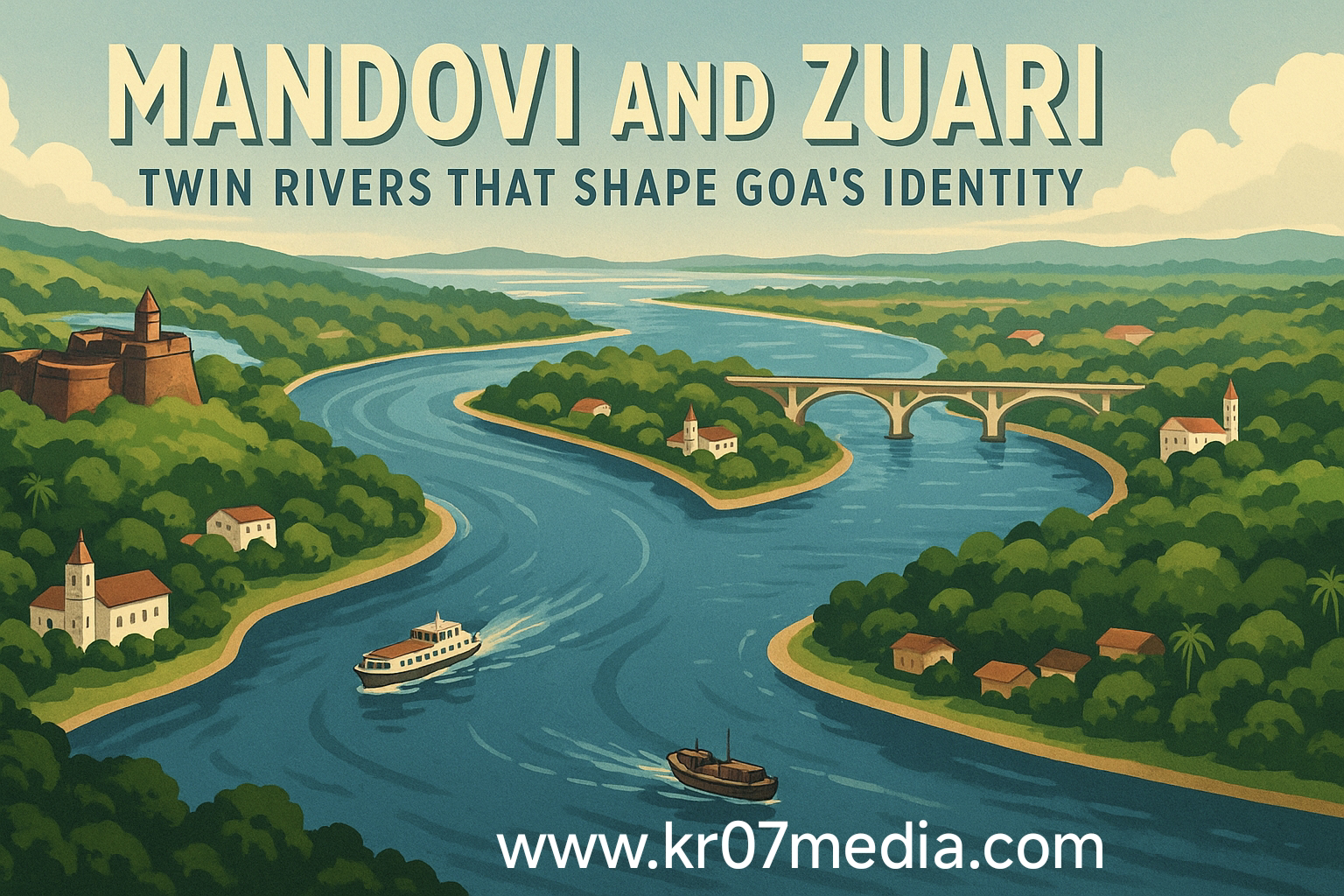Mandovi and Zuari: Twin Rivers That Shape Goa’s Identity
Nestled along India’s western coastline, the state of Goa is synonymous with scenic beaches, rich heritage, and vibrant culture. But beneath this allure lies a deeper lifeline that has shaped the region’s identity for centuries—the twin rivers, Mandovi and Zuari. Often referred to as the arterial rivers of Goa, they are not just water bodies, but dynamic forces that influence the geography, economy, environment, and soul of the state. Their confluence with the land and people has turned Goa into a unique tapestry of tradition, trade, and ecological richness.
The Mandovi River: The Lifeline of Panaji
The Mandovi River, known locally as Mhadei in its upper reaches, originates in the Western Ghats of Karnataka, traverses through the forests of Mhadei Wildlife Sanctuary, and then descends into Goa, flowing westward into the Arabian Sea near Panaji, the capital city.
This river is deeply entwined with Goa’s urban landscape. The capital city is built along its banks, and its wide, navigable channel has made it central to inland transportation and commerce. The river’s estuary serves as a hub for passenger ferries, floating casinos, houseboats, and river cruises that define Panaji’s nightlife and tourist economy.
Historically, the Mandovi was the spine of Goa’s Portuguese maritime trade, facilitating the movement of spices, ores, and textiles. Even today, barges laden with iron ore navigate its waters during mining seasons, although the activity has raised ecological concerns in recent decades.
The Zuari River: Goa’s Agricultural Artery
In contrast, the Zuari River begins in the Western Ghats in the region of Hemad-Barshem and flows southward before emptying into the Arabian Sea near Mormugao, Goa’s busiest port town. It is the longest river in Goa, forming a wide and fertile valley that supports extensive agriculture.
The Zuari irrigates a vast expanse of rice fields, coconut plantations, and spice farms. Its alluvial plains are among the most productive agricultural zones in the state. Moreover, the Zuari is closely linked to Goa’s industrial growth. The port of Mormugao, located at its mouth, is one of India’s leading natural harbors and handles a large volume of cargo, particularly iron ore exports and import of coal and fertilizers.
Despite being less glamorous than the Mandovi, the Zuari is indispensable to the livelihoods of thousands of farmers, fisherfolk, and port workers.
A Natural Network: Interconnected Estuaries and Backwaters
Though Mandovi and Zuari flow separately, they are interconnected through a network of canals and backwaters. This forms an intricate inland waterway system that has historically enabled transportation and trade across Goa without venturing into the open sea.
The Cumbarjua Canal, for instance, connects both rivers and is famed for its biodiversity, particularly the presence of mugger crocodiles, which have become a curious tourist attraction.
These estuarine systems are rich in mangroves, fish, crustaceans, and migratory birds. They serve as breeding grounds for marine life and buffer zones that protect Goa from coastal erosion and flooding.
Cultural Significance and Sacred Status
Both rivers are deeply rooted in Goan culture and spirituality. The Mandovi is associated with ancient temples like the Saptakoteshwar temple and folk deities worshipped by locals. The Mhadei, its upper tributary, is revered as a sacred river by Goans and is often called the Ganga of the West.
Festivals like Sangodd, where decorated boats are floated on the rivers to honor saints, show how river worship is embedded in local traditions. Villages along the Zuari celebrate their own water-centric rituals and harvest festivals with equal fervor.
Environmental Challenges and Conservation Efforts
Despite their vitality, the Mandovi and Zuari rivers face serious environmental threats. Unregulated sand mining, deforestation in the Western Ghats, mining runoff, sewage discharge, and over-tourism have affected water quality and aquatic life.
The inter-state Mhadei water dispute between Goa, Karnataka, and Maharashtra has added complexity to the conservation of the Mandovi’s source. Locals and activists argue that diversion of the river could have long-term ecological repercussions on Goa’s water security.
Efforts are being made to restore and protect these river systems. The Goa government, along with central agencies and NGOs, has initiated programs for cleaning the rivers, monitoring water quality, restoring mangroves, and regulating mining activities.
Shaping Goa’s Identity
Mandovi and Zuari are not just rivers—they are metaphors for Goa’s duality. While the Mandovi represents urban vibrancy, nightlife, and trade, the Zuari embodies the rural backbone of agriculture and industry. Together, they nourish the land, support communities, inspire artists, and provide a canvas for Goan identity to flourish.
In a world where rivers are drying and being dammed beyond repair, Goa’s twin rivers continue to flow as symbols of ecological resilience and cultural continuity. As Goa strides into the future, preserving the lifeblood of Mandovi and Zuari is essential to sustaining its unique spirit and identity.
Conclusion
The twin rivers of Mandovi and Zuari are more than geographical features—they are living entities that breathe life into Goa’s ecology, economy, and ethos. They reflect the harmonious blend of tradition and progress that defines this coastal paradise. To honor these rivers is to honor the very essence of Goa.



